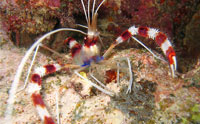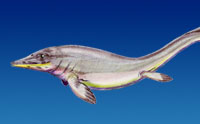Interprets World Heritage Site using biblical history. …read more Read more here: creation.com
By Ken Ham Human evolution and alcohol have been together in the news a lot recently. Discover Magazine wrote about a new study that was aimed at discovering when our supposed human ancestors “acquired the ability to consume foods containing ethanol, such as fermented fruits.” This study, “using the tools of paleogenetics,” supposedly “traced the evolutionary history of an enzyme that helps us metabolize ethanol, the principal type of alcohol found in adult beverages. Scientists believe early human ancestors evolved their ethanol-digesting ability about 10 million years ago to fortify their diet as they shifted from a tree-based lifestyle to [More]
By Ken Ham Bacterial infections are tragically killing tens of thousands of people in India as doctors are discovering that most known antibiotics are not working, according to a New York Times article . Many people will look at the tragedy and blame God in response. But is God truly at fault for the death and suffering we witness and experience in our post-Fall world? I encourage you to read Dr. Tommy Mitchell’s article on the Answers in Genesis website that answers questions like “Was God’s creation really ‘very good’?” and “Why do we die now?” I think Dr. …read [More]
A strange, new, mushroom-shaped species discovered alive on the deep seafloor off the southeastern coast of Australia may be a record-breaking living fossil. It’s not a jellyfish, sea squirt, or sponge. What is it? More… …read more Read more here: icr.org
Interest in human origins persists generation after generation, and researchers continue to uncover and interpret clues. The latest set comes from a reinvestigation of clam shells dug up in the 1890s on the Indonesian island of Java. Someone skillfully drilled and engraved those shells. Who was it? More… …read more Read more here: icr.org
Can walking birds trace tracks back through the sands of time and correct some false impressions of dinosaurs? …read more Read more here: AIG Daily
Evolutionists are being forced to rethink so-called vestigial organs in the light of some embarrassing and harmful mistakes. …read more Read more here: creation.com
The Grand Canyon is one of the world’s most awesome erosional features. How did it form? …read more Read more here: AIG Daily
Does inbreeding in people groups explain so-called races? …read more Read more here: creation.com
Did you know that this faunal icon of Australia uses less energy to breathe when it’s hopping than when it’s standing still? …read more Read more here: creation.com
In light of these new data, alternative depositional models for the Coconino should be considered. …read more Read more here: AIG Daily
In this study, I analyzed a theropod dinosaur group, Tyrannosauroidea, through the use of statistical baraminology. …read more Read more here: AIG Daily
Does this giant groundhog-like animal that shared the world with dinosaurs tell us anything about how we evolved? …read more Read more here: AIG Daily
How much time would evolution need in order to make a mouse the size of an elephant? Since this kind of evolution supposedly occurs too slowly for biologists to observe, one place to look for answers is in the fossil record. But in order to answer this particular research question, a team of evolutionary biologists made some large assumptions. The group published what amounts to a circularly-reasoned argument in a peer-reviewed journal.1 They estimated the maximum rate of evolution to achieve the most extreme change in mammal sizes. To do this, however, they had to first assume that small changes [More]
Biting opened the way for biodiversity, evolutionists say. …read more Read more here: AIG Daily
If the Lu-Hf dating method has been calibrated against the U-Pb “gold standard” with its own uncertainties, then it cannot be absolute. …read more Read more here: AIG Daily
Did your cat evolve to like you? …read more Read more here: AIG Daily
By Ken Ham I recently saw something in Discovery News that perfectly highlights the difference between observational and historical science. Common Tenrec (Tenrec ecaudatus). By John Mather (Own work) [CC-BY-SA-4.0 (http://creativecommons.org/licenses/by-sa/4.0)], via Wikimedia Commons A study has shown that tenrecs, hedgehog-looking creatures, have an amazing ability to hibernate (observational science) so the scientists inferred that the tenrecs must have hibernated through the dinosaur extinction (historical science)! As I’ve said many times previously, there are two different kinds of science. Observational science deals with the present and is observable, repeatable, and testable. It’s what produces our technology and our medical innovations. [More]
The effects of solar activity are causing some scientists to question whether radioactive decay rates are constant. …read more Read more here: creation.com
Fossils seem to tell amazing stories about ancient animal life, but close inspection reveals that these stories differ from each other not because of different fossils, but because of different interpretations. Do the remarkable circumstances surrounding a newly discovered fossil arthropod tell two stories or just one? More… …read more Read more here: icr.org
A watery catastrophe is the only explanation for an amazing collection of fossils on Tasmania’s north west coastline. …read more Read more here: creation.com
Recently there has been some celebration from the Darwinian community regarding a fossil discovery that allegedly links terrestrial animals to their future aquatic relatives. More… …read more Read more here: icr.org
The apparent redundancy of the genetic code has long been called codon “degeneracy”—evidence that the present genetic code is an evolutionary product. …read more Read more here: AIG Daily
A highly unusual spider testifies to biblical creation. …read more Read more here: creation.com
Earth’s magnetic field decay, combined with rapid reversals during the Flood, is good evidence for a young world. But now one secular co-author of the rapid reversal papers has retracted. …read more Read more here: creation.com
15 Questions for Evolutionists Evolution: the naturalistic origin of life and its diversity (The General Theory of Evolution, as acknowledged by prominent evolutionists, includes the origin of life; see introduction to Origin of life.) by Don Batten 1. How did life originate? Evolutionist Professor Paul Davies admitted, “Nobody knows how a mixture of lifeless chemicals spontaneously organized themselves into the first living cell.”1 Andrew Knoll, professor of biology, Harvard, said, “we don’t really know how life originated on this planet”.2 A minimal cell needs several hundred proteins. Even if every atom in the universe were an experiment with all the [More]
By Ken Ham One of the most spectacular and breathtaking places in the United States is the Grand Canyon. No other place is quite like it. Unfortunately, it is used largely to indoctrinate people with millions of years of evolutionary geology. But does the Grand Canyon actually represent millions of years of slow erosion? Not at all. The Grand Canyon stands as a testament to the global Flood of Noah’s day and catastrophic processes. And you can see this for yourself! This summer I encourage you to join Flood geologists and creation researchers on the trip of a lifetime down [More]













































